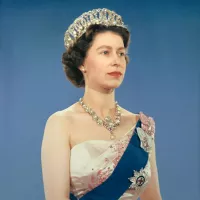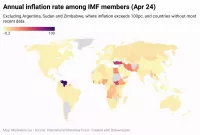Papua New Guinea is an island country in Oceania, located north of Australia. It occupies the eastern half of the island of New Guinea and surrounding islands in Melanesia. It shares a land border with Indonesia to the west. The capital city is Port Moresby, situated on the southern coast. With a land area of 462,840 km2, Papua New Guinea is the world's third-largest island country.
1902: Papua transferred to Australia
In 1902, Papua was effectively transferred to the authority of Australia.
1902: Territory of Papua ceded to Australia
In 1902, the British Territory of Papua in the South was ceded to Australia.
1905: Passage of the Papua Act
With the passage of the Papua Act in 1905, the area was officially renamed the Territory of Papua.
1906: Australian Administration formal
In 1906, the Australian administration became formal, with Papua becoming fully annexed as an Australian territory.
1946: New Guinea as UN trust territory
In 1946, New Guinea was declared a United Nations trust territory under Australian governance.
1964: Mining exploration by Rio Tinto
In 1964, mining exploration by Rio Tinto in Bougainville began, leading to the establishment of the Bougainville Copper corporation.
1964: 1964 election
The 1964 election took place alongside campaigns to introduce the political system.
1968: Ten Thousand Years in a Lifetime published
In 1968, Ten Thousand Years in a Lifetime, an autobiography by Albert Maori Kiki, was published, marking the first major publication of Papua New Guinean literature.
1968: 1968 election and Pangu Pati formation
The 1968 election took place alongside campaigns to introduce the political system. The leadup to the 1968 election saw the formation of Pangu Pati, the first political party.
1969: Gough Whitlam visited Papua New Guinea
In 1969, Australian Opposition Leader Gough Whitlam visited Papua New Guinea.
1970: Publication of Crocodile by Vincent Eri
1970 saw the publication of the first Papua New Guinean novel: Crocodile by Vincent Eri.
1970: Government support for literature
In 1970, the government of Papua New Guinea began to actively support literature, publishing works in multiple languages.
March 1971: House of Assembly recommended self-governance
In March 1971 the House of Assembly recommended that the territory seek self-governance in the next parliament, which was agreed to by Australia.
June 1971: Flag and emblem adopted
In June 1971, the flag and emblem were adopted.
1971: Sorcery Act
In 1971, the Sorcery Act allowed for accusations of sorcery to act as a defence for murder.
1972: Whitlam calls for self-governance
As early as 1972, Whitlam made self-rule in the territory an election issue, and called for self-governance.
1972: Michael Somare elected Chief Minister
At the 1972 Papua New Guinean general election in July, Michael Somare was elected as Chief Minister.
1972: Rainforest damage and destruction
Between 1972 and 2002, nearly one-quarter of Papua New Guinea's rainforests were damaged or destroyed.
1972: All governments since 1972 have been coalitions
Since 1972, all governments in Papua New Guinea have been coalitions.
1973: Self-governance instituted
In late 1973, the Whitlam government instituted self-governance.
April 1975: Kina introduced as currency
In April 1975, the kina was introduced as a separate currency.
September 1975: Papua New Guinea Independence Act passed
The Papua New Guinea Independence Act 1975 passed in September 1975, setting 16 September 1975 as the date of independence. The government of Bougainville declared independence. Somare continued as the country's first Prime Minister.
1975: Secessionist movement on Bougainville Island
A secessionist movement in 1975–76 on Bougainville Island resulted in a modification of the Constitution of Papua New Guinea.
1975: Australian budget contribution
In 1975, Australian contribution to the budget was 40% of government revenue.
1975: Independence as a Commonwealth realm
In 1975, Papua New Guinea became an independent Commonwealth realm with Elizabeth II as its Queen.
August 1976: Agreement with national government
In August 1976, an agreement with the national government resolved the initial declaration of independence.
1976: Tok Pisin adopted as official language in Enga Province
In 1976, Enga Province, Papua New Guinea, which is dominated by Enga language speakers, adopted Tok Pisin as its official language.
1977: Sanguma formed at the National Arts School
In 1977, Sanguma, an early band in Papua New Guinea, formed at the National Arts School and toured internationally.
1977: Somare retains prime ministership
Somare retained the prime ministership following the 1977 election.
1979: First state of emergency
The first state of emergency was declared in 1979 due to tribal fighting in the highland areas.
1980: Somare ousted through vote of no confidence
In 1980, Somare was ousted through a vote of no confidence.
1982: Somare becomes prime minister again
Following the 1982 election, Somare became prime minister again.
1982: Ok Tedi Mine opened
The Ok Tedi Mine opened in 1982.
1984: State of emergency in Port Moresby
In 1984, gang violence led to a state of emergency in Port Moresby, which led to the intervention of the Papua New Guinea Defence Force (PNGDF).
1985: Somare loses vote of no confidence
In 1985, Somare lost another vote of no confidence.
1986: Founding member of the Melanesian Spearhead Group
In 1986, Papua New Guinea became a founding member of the Melanesian Spearhead Group alongside the Solomon Islands and Vanuatu. Also in 1986, a cooperation treaty was signed with Indonesia.
1988: Australian budget contribution
In 1988, Australian contribution to the budget dropped to 17% of government revenue.
1988: Formal cooperation agreement signed
In 1988, Papua New Guinea, the Solomon Islands and Vanuatu signed a formal cooperation agreement.
1988: Renewed uprising on Bougainville
In 1988, a renewed uprising on Bougainville started, fighting against both the Bougainville government and the national government.
May 1989: Bougainville mine closure
After the mine closed in May 1989, the Bougainville Revolutionary Army (BRA) declared independence.
1990: First music video shown on television
In 1990, the first music video was shown on television in Papua New Guinea.
1990: Maternal mortality rate
In 1990, the maternal mortality rate per 100,000 births for Papua New Guinea was 340.
1990: National government pulls out of Bougainville
In 1990, the national government pulled out of Bougainville and blockaded the province, the conflict shifted into a complex internal civil war. National security forces re-entered the island at the end of 1990.
October 1994: Agreement reached with some rebels
In October 1994, an agreement between the government and some rebels was reached.
1994: Kina devalued
The Papua New Guinean kina was devalued and put on a floating exchange rate in 1994.
1995: Transitional Bougainville government established
In 1995, a transitional Bougainville government was established, although fighting continued with the BRA.
1995: Provincial governments reformed
In 1995, provincial governments were reformed, with some responsibilities devolved towards local governments.
1995: Emergency loan from World Bank
In 1995, the country obtained an emergency loan from the World Bank.
1996: Houses connected to electricity
In 1996, only 3% of houses in rural areas were connected to electricity in Papua New Guinea.
1997: Sandline affair
In 1997, the Sandline affair over the hiring of mercenaries to intervene in Bougainville brought down the national government.
1997: 1997 election results
In the 1997 election, only 4 candidates won overall majorities, with 95 (87%) of winners receiving less than 30% of the vote.
January 1998: Ceasefire reached
Following New Zealand-mediated peace talks, a ceasefire was reached in January 1998.
1999: Constitutional Development Commission established
After government changed mid-parliament in 1999, a Constitutional Development Commission was established to bring about political reform.
April 2000: Languages with educational support
As of April 2000, 837 languages in Papua New Guinea had educational support.
2000: Urban areas with a population over 1,000
As of 2000, there were 40 urban areas in Papua New Guinea with a population over 1,000.
2001: Bougainville Peace Agreement signed
In 2001, the Bougainville Peace Agreement was signed, granting Bougainville greater autonomy and the promise of a future independence referendum.
2002: Rainforest damage and destruction
Between 1972 and 2002, nearly one-quarter of Papua New Guinea's rainforests were damaged or destroyed.
2002: Uptick in violence during the 2002 election
The 2002 election in Papua New Guinea saw an uptick in violence.
2004: Australian police brought to PNG
In 2004, Australian police were brought to Papua New Guinea to help train the PNG police force, beginning a long-term Australian police presence.
2004: Majority of incumbents lost their seats
In every election prior to at least 2004, the majority of incumbents in Papua New Guinea lost their seats, creating an incentive for corruption.
2005: Maternal mortality rate
In 2005, the maternal mortality rate per 100,000 births for Papua New Guinea was 270.
2008: Kuk Early Agricultural Site inscribed as UNESCO World Heritage Site
In 2008, the Kuk Early Agricultural Site in Papua New Guinea was inscribed as a UNESCO World Heritage Site.
2008: Maternal mortality rate
The 2008 maternal mortality rate per 100,000 births for Papua New Guinea was 250.
2009: Creation of two additional provinces
In 2009, Parliament approved the creation of two additional provinces: Hela Province, from Southern Highlands Province, and Jiwaka Province, from Western Highlands Province.
2011: Constitutional crisis
In 2011, Papua New Guinea experienced a constitutional crisis between the parliament-elect Prime Minister, Peter O'Neill, and Somare, who the supreme court deemed to retain office.
2011: Median age of the population
In 2011, the median age of Papua New Guinea's population was under 22, and 36% of the population was younger than 15.
2011: Census results
The 2011 census in Papua New Guinea found that 95.6% of citizens identified themselves as Christian, 1.4% reported other beliefs, and 3.1% gave no answer.
2012: Tuition fees abolished
In 2012, tuition fees were abolished in Papua New Guinea, leading to an increase in educational attendance.
2012: O'Neill re-elected as prime minister
The 2012 national elections went ahead as scheduled, and O'Neill was once again elected as prime minister by a majority of parliament.
2012: O'Neill government dogged by corruption scandals
The 2012–2017 O'Neill government was dogged by corruption scandals.
2013: Education shifted back towards English
In 2013, education in Papua New Guinea was shifted back towards English in an attempt to improve low English literacy rates.
2013: Sorcery Act repealed
In 2013, the Sorcery Act was repealed.
2014: Government health expenditure
In 2014, Government health expenditure accounted for 9.5% of total government spending, with total health expenditure equating to 4.3% of GDP.
2014: Liquefied natural gas exports began
In 2014, liquefied natural gas exports began in Papua New Guinea, but government revenue was lower than expected due to falling oil prices.
March 2015: Bougainville Mining Act shifted control over mining
In March 2015, the Bougainville Mining Act shifted control over mining from the national government to the Bougainville government, and gave landowners veto power over future extraction.
2015: International migrants
As of 2015, about 0.3% of the population of Papua New Guinea was international migrants.
2015: Sign language recognized as a national language
In 2015, sign language (in practice Papua New Guinean Sign Language) was recognized as one of the four national languages in Papua New Guinea.
2016: Vaccine coverage was 35%
In 2016, vaccine coverage in Papua New Guinea was 35%, with 24% of children having no vaccines.
2016: Houses connected to electricity
In urban areas of Papua New Guinea, 55% of houses were connected to electricity in 2016.
2016: Ministerial tenures are often short
Ministerial tenures are often short, averaging half the length of a parliament from 1972 to 2016.
2017: O'Neill returns as prime minister
The 2017 general election saw O'Neill return as prime minister, although initially with a smaller coalition. This election saw widespread voter intimidation in some regions, and delays in the reporting of seat results.
2018: Natural resource extraction
As of 2018, natural resource extraction made up 28% of overall GDP in Papua New Guinea.
2018: Criticism of APEC Papua New Guinea 2018 meeting
Financial scandals, as well as criticism of the purchase of expensive cars for APEC Papua New Guinea 2018 meeting, created pressure on O'Neill and led to defections from government.
May 2019: O'Neill resigns as prime minister
In May 2019, O'Neill resigned as prime minister and was replaced by James Marape.
November 2019: Independence referendum
The government set 23 November 2019 as the voting date for a non-binding independence referendum in the Bougainville autonomous region. Voters overwhelmingly voted for independence (98.31%).
2019: Real GDP growth rate
As of 2019, PNG's real GDP growth rate was 3.8%, with an inflation rate of 4.3%.
2019: Lowest HDI rating in the Pacific
As of 2019, Papua New Guinea's HDI rating was the lowest in the Pacific.
2019: Life expectancy in Papua New Guinea at birth
As of 2019, life expectancy in Papua New Guinea at birth was 63 years for men and 67 for women.
2019: Tuition fees partially reintroduced
In 2019, tuition fees were partially reintroduced in Papua New Guinea after initially being abolished in 2012.
2020: Population estimate
The United Nations Department of Economic and Social Affairs population estimate as of 2020 was 8.95 million inhabitants.
2021: Government population estimate
Government estimates put the population at 11.8 million in 2021.
December 2022: New population estimate
In December 2022, a report by the UN suggested a new population estimate of 17 million for Papua New Guinea.
2022: Marape continues as Prime Minister
Prime Minister James Marape's PANGU Party secured the most seats of any party in the 2022 election, enabling James Marape to continue as PNG's Prime Minister.
2022: Charles III becomes King
Since Elizabeth II's death in 2022, Charles III has been the King of Papua New Guinea.
2023: Population in urban centres
As of 2023, only 14% of Papua New Guinea's population lived in urban centres.
2023: Rural Population
In 2023, it was reported that only 14% of the population of Papua New Guinea lived in urban centres.
2023: Doctors per 10,000 people
In 2023, there were 0.61 doctors per 10,000 people in Papua New Guinea.
March 2025: Constitutional amendment
In March 2025, a constitutional amendment recognized Papua New Guinea as a Christian country, with specific mention of "God, the Father; Jesus Christ, the Son; and Holy Spirit", and the Bible as a national symbol.
Mentioned in this timeline
Facebook is a social media and networking service created in...

Elizabeth II reigned as Queen of the United Kingdom and...
India officially the Republic of India is a South Asian...
The Association of Southeast Asian Nations ASEAN is a regional...
China officially the People's Republic of China PRC is an...

Inflation in economics signifies an increase in the average price...
Trending
8 days ago Jalen Williams' Impact: Thunder, Warriors Matchups, Dort's Future, Injury Return
Keldon Johnson is an American professional basketball player currently playing for the San Antonio Spurs in the NBA Prior to...

6 months ago Brokeback Mountain's 20th Anniversary: Challenging Hollywood and impacting audiences, starring Heath Ledger.

6 months ago Sarah Sherman's SNL Checks Mistakenly Sent to Gilda Radner's Estate: A Sobbing Revelation

Lily Allen is an English singer songwriter and actress known for her distinctive voice and candid lyrics She gained prominence...

8 days ago Jesse Plemons discusses 'Bugonia', Oscar buzz, and career from child actor.
Popular

Candace Owens is an American conservative political commentator and author...

Ilhan Omar is an American politician currently serving as the...

XXXTentacion born Jahseh Dwayne Ricardo Onfroy was a controversial yet...

Tom Cotton is an American politician and Army veteran currently...
The Kennedy Center Honors are annual awards recognizing individuals and...

Kelsey Grammer is an accomplished American actor producer and singer...
